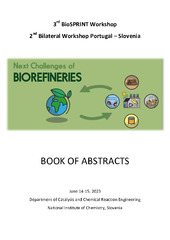| dc.description.abstract | Fruits are the most utilized commodities among all horticultural crops. They are consumed raw, minimally processed, due to their nutrients and health-promoting compounds. With the growing population and changing diet habits, the production and processing of fruits, have increased very significantly to fulfil the increasing demands. Significant losses and waste in the fresh and processing industries are becoming a serious nutritional, economical, and environmental problem. The fruit waste is composed mainly of seed, skin, rind, and pomace, containing good sources of potentially valuable bioactive compounds. The apple pomace is rich in pectic substances and represents important raw material for pectin production all around the world. For example, the portion of residual apple pomace makes about 13 % of the total waste material and on the basis of dry mass, it contains 10–15% pectin. Currently, it is either used for animal feeding or is disposed of as an industrial waste. The extraction of pectin is usually performed using mineral acids, yielding a reasonable quantity of product while also saving time in the process. Even though pectin has various applications in the food manufacturing industry, consumers have a negative perception upon learning that strong acids are used in pectin extraction. Furthermore, high acidity speeds up corrosion and rust formation of the apparatus, leading to water pollution which contributes to environmental concerns.
The present study reports the lab-scale procedure for extraction of pectin from the waste industrial apple pomace using deep eutectic solvents (DESs) as extraction medium. DESs turned to be an excellent choice for extraction because they are non-volatile at room temperature and non-toxic, while the majority of DESs are water-miscible depending on their components. The process consisted of the processing of apples, employing milling, enzymatic digestion and pressing. The further analysis included temperature and ultrasound assisted extraction and purification of pectin as well as the detailed physicochemical analysis of the obtained product. The applied procedure has resulted in satisfactory yields under mild extraction conditions, optimal extraction time and industrially preferred properties of the isolated pectin. | sr |

